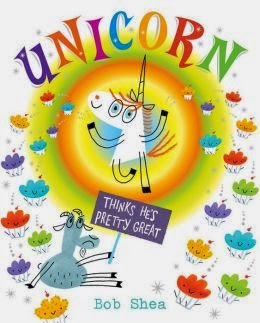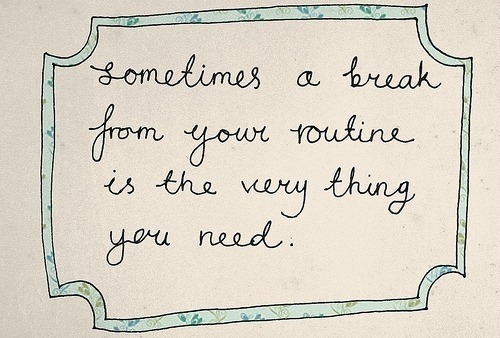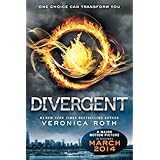This is my first time doing the nonfiction 10 for 10. Honestly, I thought it would be easy to pick 10 nonfiction books I can't live without but it wasn't. In January I really wanted to think about how to use more nonfiction books with students and to add some great mentor texts to my rather small collection. So I have been putting books on hold at the library and looking on twitter for any new nonfiction books I could get my hands on. I have really enjoyed reading so many nonfiction books over the past month and I just love author notes because the page includes additional information about the topic and we learn the author's purpose for writing the book. I decided to keep some of my absolute faves and sprinkle in some new titles. Even as I am crafting this blog I keep thinking about the choices I have made and if I will change my mind on a few?! So here is my stack of nonfiction must haves:

I stumbled across this book while browsing for some nonfiction texts and I absolutely love it. The photos are wonderful and they take up most of the page to peak your interest. On each page Seymour Simon shares facts that you may not have heard about 20 animals with bad reputations, so that readers gain a new appreciation of what these animals do in order to survive. In the intro Seymour Simon's last line is this: "You may never love a rattlesnake, a cockroach, or an octopus-but his book may help you begin to understand and respect them for what they are." I love how he starts his intro with a question grabbing the readers attention and sparking curiosity. It is a nonfiction text that kids will take time to ponder both the words and pictures while learning new facts along the way.
I have shared this book with a small group of third graders. We used this book to figure out what a page was mostly about and the important details that support the main idea. Each day the students would walk in and try to guess which animal we would read about and discuss. I wanted them to understand that readers read nonfiction and think about what the page is mostly about so that they can then share their new learning with others. I have to say I really enjoyed reading and discussing the animals in the book right along the side of my students.

I love to read biographies about people who have made great contributions that open doors for others to follow. Elizabeth Blackwell is a courageous and curious girl who lives in the 1830s. She never really thought about being a doctor until she went to visit her friend Mary Donaldson. Mary was very ill and she told Mary that she would have preferred to have a woman doctor. Mary urged Elizabeth to become a doctor. Elizabeth wondered if a woman could actually become a doctor, why would she want to be one? This idea gnawed at Elizabeth and she thought about it all the time. She decided to ask some doctors and friends. Most of them didn't think that a woman could become a doctor and some said it wasn't right. Some people even laughed at Elizabeth when she shared the idea. However, Elizabeth thought it was a fine idea and pursued her dream. Readers will enjoy the many obstacles Elizabeth overcomes and her strong pursuit of becoming the first female doctor.
Some other books I would also share with the students to discuss people who have made great contributions would be the following:
On A Beam of Light: A Story of Albert Eistein,
The Boy Who Loved Math,
The Tree Lady: The True Story of How One Tree-Loving Woman Changed a City Forever,
To Dare Mighty Things by Doreen Rappaprt, and
Nelson Mandela by Kadir Neson.
This book by Nicola Davies has been a longtime favorite of mine for nonfiction. There are so many things I truly love about this book. I love the bold words, how she uses repetition to get her point across to the reader, how she addresses the reader, the diagrams and the circular beginning and ending. I love this part at the beginning of the book, "What's the one word that turns your dream into a nightmare? What's the one word that makes you think of a giant man-eating KILLER? SHAAAAAAAARK! At the end of the book she says, "If you were a shark swimming in the lovely blue sea the last word you'd want to hear would be... HUMAN!
I always use this book to show how writers can use voice in their nonfiction pieces. I love how her factual information is stated in a persuasive way so that readers understand that sharks really aren't monsters. They are important part of the ocean food chain and not all sharks are dangerous to humans. After you are done reading this book you will have gained a new appreciation for sharks that just might surprise you!
This is one of those rare treasures I found at the Scholastic Book Fair. David FistzSimmons does an awesome job of using personification to help you learn how some factual tidbits on each curious critter. He addresses the reader and each page is truly unique. I think this would be a great book to use for a read aloud and for shared reading with intermediate students. You could focus on how he uses punctuation in interesting ways and the way the author plays with words. Here is a snippet from a page about the Virginia Opossum...
I wrote a little poem, but I'm afraid to read it to you.
What if you don't like it?
You really want to hear it? All right, here goes...
Ode to Opossum
by O. Possom
Opossum! Opossum! How I love you!
You carry your kids like marsupials do.
Whenever your bothered, you run on ahead.
If further provoked, you pretend you are dead.
But what I was wondering in writing these lines
is why say "Opossum, " Possum? No "O" is fine!

This book by Renee Watson is about the singer named Florence Mills. She was a member of the Harlem Renaissance elite. Florence was blessed with a sweet, birdlike singing voice during a time of racism. She used her talent not to promote her own celebrity status world wide but to help promote other African American performers. She used her voice to cry out for equal rights and to entertain her audience. I love this book because Florence has a big and powerful voice along with a kind heart. I read this book to students so Florence's beautiful voice can resonate through the author's words and so her kindness can continue to be carried on!

Frog Song focuses on the importance of frogs within different ecosystems and the wonderful songs each frog sings from Costa Rica to the Australian desert. I love the onomatopoeia bold words and the beautiful illustrations by Gennady Spirin. Students will love hearing the book read aloud and learning factual information about several frog species. Make sure you check out the additional information about the different kinds of frogs mentioned in the back of the book and the author's note about why frogs are in trouble. This book truly helps you gain a deeper appreciation for frogs, which will help you embrace the wonder of frog songs.
I love how the author invites you to eat, search, hunt, climb, bath, forage, and prepare like a bear. Read and enjoy some of the language from this book...
Can you hunt like a bear?
It's June. Find Food.
But where?
An elk calf has strayed from its herd.
Press paws. Give chase! Body bounding, race!
Find...
I love the use of alliteration and the short sentences that help to create a nice rhythm when reading aloud! There is additional information in the back of the book so readers can continue to find answers to their fierce wonderings about bears.

I have been a big fan of Jim Arnosky and I use his books as mentor texts when crafting nonfiction pieces in writing workshop. My colleagues bought this book for me and I love how it is a collection of Jim Arnosky's sea stories along with a collection of his paintings of the ocean dwellers that inspired him. The giant fold out pages have intricate detail and many of them are life-size paintings. Jim also includes sketches on different pages throughout the book. The introduction is a special note to the readers that includes his signature at the bottom of the page. Children will enjoy learning about the different sea animals from the text, beautiful illustrations and the wonderful fold out pages.

If you enjoy the Macy's Day Parade than you will want to read
Balloons Over Broadway. This book is about Tony Sarg, puppeteer and the genius behind the giant balloons that float in the skies on Thanksgiving Day. Tony was a creative and curious boy who loved to figure out how to make things move. When he was older he moved to London and started making marionettes for kids. His genius mind figured out a way to make the marionettes movement so lifelike that word spread quick about Tony's fabulous marionettes. Macy's hired him to make a "puppet parade" for Macy's "Wondertown" windows. Then Macy's had a bigger job in mind for Tony because they agreed to put on a street parade for their workers. You will need to read and find out how one simple idea and one extraordinary man created one the biggest events that continues to take place every year on Thanksgiving Day.

Sandra Markle's beginning includes onomontopoeia words that begin the life cycle of a young godwit. Here are a few words from the book: Crackle! Crackle! Crunch! What's hatching from that egg? It's a young bar-tailed godwit.
This bird is born during the summer in Alaska. The yound godwit will learn to hunt, fly and escape predators in the Alaskan terrain. The long, long journey will begin when it leaves Alaska in October to migrate all the way to New Zealand. Oh yes, the godwit travels 7, 000 miles nonstop! This long journey is actually the longest nonstop bird migration ever recorded, how fascinating is that! I also love the amazing facts in the back of the book about the godwit, so make sure you check it out!






































